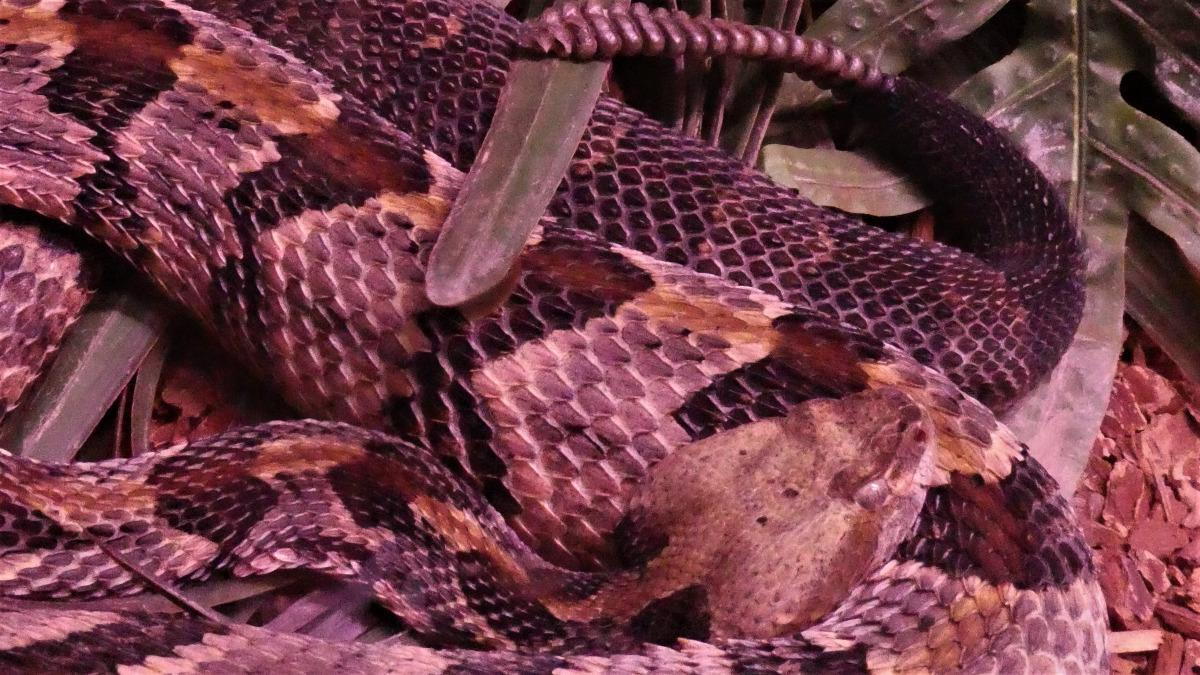Slither into St. Patrick's Day: Seven Snake Stats

- posted: Mar. 13, 2020
Slither into St. Patrick’s Day: Seven Snake Stats
Today we celebrate St. Patrick’s Day—Legend has it that St. Patrick drove all the snakes in Ireland in to the sea, so I thought we could look at some fun facts about snakes.
- There are, in fact, no snakes living in Ireland to this day. But St. Patrick is not the one to blame. Scientists say that there never were any snakes in the island nation due to an ice age 15,000 years ago—conditions were too cold for snakes to survive. Once the ice melted, Ireland was separated from the mainland by the North Channel and no snakes were able to cross this water barrier.
- Pennsylvania has three species of venomous snakes: the Copperhead, the Timber Rattlesnake and the Eastern Massasauga which is found in isolated areas in Western PA and is on the endangered species list. All three are members of the pit viper family. There are a total of twenty-one species of snakes in Pennsylvania.
- Non-venomous snakes kill their prey by constriction, biting/chewing their prey or swallowing prey alive.
- The longest snake in the world is the reticulated python, averaging 18 feet in length and found in southeast Asia. The longest python ever recorded was 32 feet long!
- The smallest snake in the world is the Barbados Threadsnake, averaging about 4 inches in length and about as thick as a spaghetti noodle. This snake was discovered by Penn State biologist Blair Hedges in 2008.
- The Inland Taipan found in Australia is considered to be the deadliest or most venomous snake in the world. The venom from one taipan bite can kill 100 adult humans and can kill a person in as little as 30-45 minutes. Luhttps://www.irishcentral.com/roots/saint-patrick-banish-snakes-irleandckily, the Inland Taipan lives in remote areas of Australia where it rarely contacts people. The Black Mamba is also highly venomous and is considered to be the fastest snake, able to reach speeds of 12 miles/hr!
- Snakes do not have external ears or eyelids. They cannot chew but have flexible jaws allowing them to swallow prey whole. Snakes typically eat once every one to two weeks but can go months without eating. Studies show that some snakes can go for up to two years without a meal!
Hope you enjoyed these snake facts! Have a Happy St. Patrick’s Day!
This blog brought to you by the Patton Veterinary Hospital serving Red Lion, York and the surrounding communities.
https://www.sciencedaily.com/releases/2008/08/080804100258.htm
https://snake-facts.weebly.com/
https://www.irishcentral.com/roots/saint-patrick-banish-snakes-irleand
Location
Patton Veterinary Hospital
425 E Broadway
Red Lion, PA 17356
